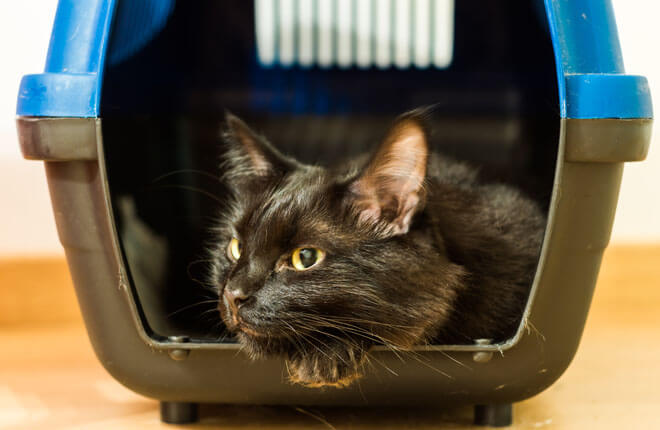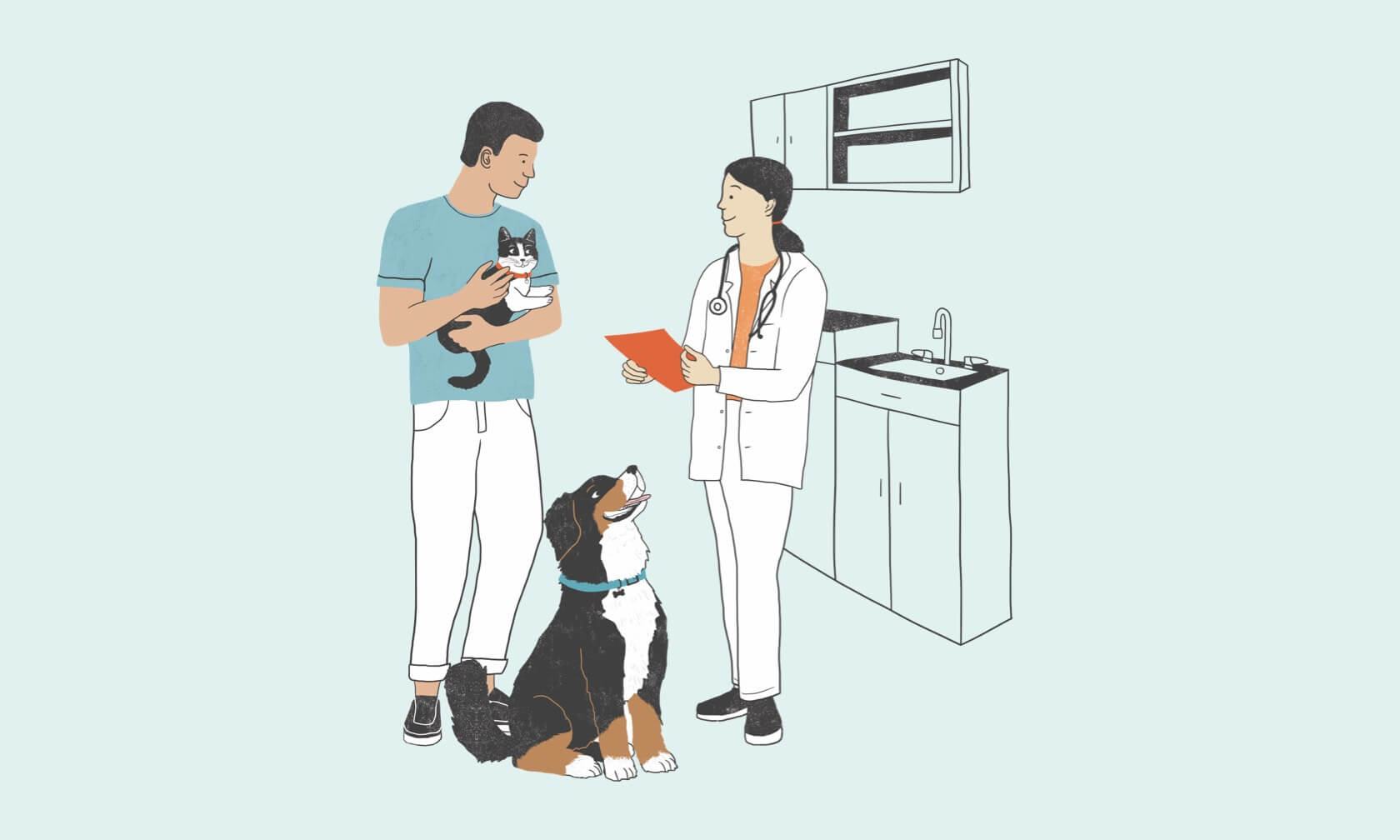Is your cat peeing on your carpet, bed, or furniture? Are they going outside of their litter box or spraying your walls? If so, you might be wondering, “Does my cat have a urinary tract infection (UTI)?”
While these signs can be caused by urinary tract infections in cats, they can also be due to a host of other conditions. The truth is, depending on your cat's age, sex, and existing medical conditions, urinary tract infections aren't as common in cats as many people believe. Bacterial urinary tract infections occur in less than 1% of cats overall, and they very rarely affect cats under ten years of age[1]. However, they can occur in more than 40% of cats over ten years of age[1].
When UTIs happen, prompt recognition, diagnosis, and treatment are important for your cat. Let’s explore how to determine if your cat might have a UTI — or another urinary problem — and what you should do if they’re not putting their pee where they should be.
Symptoms of Urinary Tract Infections in Cats
Urinary tract infections in cats can be caused by a host of different “invaders”, but bacteria tend to be the most common culprit.
Signs you might see if your cat has a urinary tract infection include:
- Increased frequency of trips to the litter box
- Smaller urine clumps in their litter box
- Peeing outside of their litter box
- Blood in their urine
- Straining or vocalizing when peeing

How Veterinarians Diagnose Urinary Tract Infections in Cats
To determine if your cat might have a UTI, your veterinarian will begin by examining your cat and asking you some questions.
During the thorough physical examination, your veterinarian may be looking for the following in your cat:
- Enlarged or small bladder
- Bladder and/or kidney pain
- Blood around their genitals
Your veterinarian might ask you some of the following questions. Give some thought to these questions in advance to make the most of your visit.
- How long has your cat been exhibiting these signs?
- Have you noticed any change in your cat’s appetite and/or thirst?
- How many litter boxes do you have available for your cat(s)?
- How often do you scoop your cat’s litter boxes?
- What food does your cat eat?
To make their diagnosis, and depending on what they find on their examination and the answers you provide to their questions, your veterinarian might recommend any or all of the following tests and assessments:
- Complete Urinalysis
This measures urine pH and concentration, and checks for the presence of glucose, red and/or white blood cells, urinary crystals, bacteria, and other abnormalities within the urine. - Urine Culture and Sensitivity
This allows for identification of any bacteria living in your cat's urinary system and information on what antibiotics the bacteria is susceptible to. - Blood Biochemistry Panel
This checks for abnormal blood levels of metabolic waste products that the kidneys help regulate, which could be indicative of kidney disease if present at elevated levels. It also checks for levels of glucose, electrolytes, circulating thyroid hormones, and other overall health markers in the blood. - Complete Blood Count
This measures the levels and assesses the properties of the different types of cells within the blood. - X-rays and/or Ultrasound
This evaluates the size, shape, and other aspects of the kidneys, bladder, and other abdominal organs. It also looks for stones within the kidneys and/or bladder (which if present can cause blockages).
Your veterinarian may ask you to bring a urine sample with you, but it’s more likely they will want to collect a fresh, sterile sample directly from your cat’s bladder at the visit. This is to ensure that a high-quality sample can be gathered. So, try not to let your cat pee for a few hours prior to their visit.
Treatment for Urinary Tract Infections in Cats
If your veterinarian determines that your cat has a UTI, they'll likely prescribe a course of antibiotics. The duration of this course can last anywhere from 1-2 weeks to as long as 3-6+ weeks, depending on the severity of the infection, the type of bacteria found on urine culture testing, and any chronic medical conditions or other risk factors your cat may have.
To give your cat the best chance of clearing their urinary tract infection, and to decrease the chances of them developing antibiotic-resistant bacteria, it’s critically important that you give them the antibiotics as prescribed by your veterinarian and be sure to finish the course entirely. If you’re having trouble giving the antibiotics prescribed, be sure to talk to your veterinary team for tips, tricks, and other advice.
To ensure that your cat’s UTI has cleared, it’s important to have follow-up testing done on their urine as recommended by your veterinarian.
Causes of Urinary Tract Infections in Cats
Bacteria that cause UTIs in cats can be normal residents in the end part of the urinary system that gain access to the typically sterile parts of the urinary tract. Cats with healthy defenses keep these bacteria under control. When there’s a break in those defenses (from things like inflammation, stress, or immune-suppressing conditions) the bacteria can migrate up, reproduce, and set up a UTI.
UTI-causing bacteria can also gain access to the urinary tract from the gastrointestinal system, typically due to poor self-grooming or following bouts of diarrhea.
Certain conditions can make urinary tract infections more likely in some cats. If your cat is getting multiple UTIs, your veterinarian may want to check for an underlying problem. Below are some of the conditions that can increase a cat’s risk of getting a UTI:
- History of previous perineal urethrostomy surgery (often performed on male cats after problems with urinary tract obstruction)
- Bladder or kidney cancer
- Thickened bladder wall
- Recent diarrhea
- Megacolon and other causes of constipation
Get to know your cat’s normal when they’re healthy and happy, so you can more easily identify the signs and symptoms of UTIs and other potential problems and seek the advice of your veterinarian if you have any concerns.
ZPC-00935R1
- Bartges, J., ABVP Symposium 2017. Urine Pain: Urinary Tract Infections



